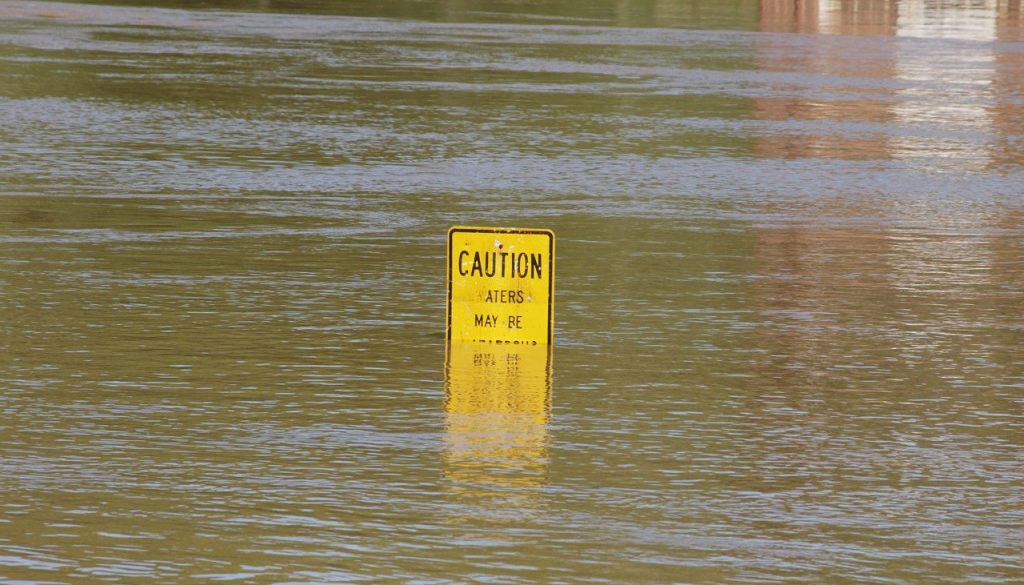A New Flood Protection Standard for the US’ Flooding Problem
By Joel Scata, Natural Resources Defense Council
America has a flooding problem. In 2017, the federal government declared 44 major disaster events that involved flooding and hurricanes, surpassing 2016, in which 36 major flood-related or hurricanes disasters were declared. Adoption of a flood protection standard for federally-funded infrastructure projects should be part of the solution.
The recently released draft National Mitigation Investment Strategy (“Draft Strategy”) provides a strong framework for encouraging mitigation investments that are vital to reducing disaster risk, including from flooding, but the Draft Strategy could be bolder by explicitly calling for the adoption of such a standard. (![]() nrdc_comments_on_draft_nmis_final.pdf)
nrdc_comments_on_draft_nmis_final.pdf)
Flooding Is Underestimated and Worsening by the Day
Flooding can cause serious damage to the nation’s physical infrastructure, like roads, bridges, and water and wastewater treatment facilities. Between 1998 and 2014, the Federal Emergency Management Agency (FEMA) spent $48.6 billion through its Public Assistance program in the wake of floods and coastal storms to repair or replace public buildings ($12.6 billion), public utilities ($7.4 billion), roads and bridges ($5.5 billion), and water-control facilities like levees, dams, and pumps ($1 billion), with the remainder spent on clean-up and emergency actions. The Public Assistance program, which is only activated after federal disaster declaration, represents just a portion of total federal expenditures on flood recovery efforts.
Unfortunately, new research suggests America’s exposure to flooding is vastly underestimated, and for coasts, the risk of flooding at high-tide is worsening by the day due to sea level rise.
According to a new study, Estimates of Present and Future Flood Risk in the Conterminous United States, 41 million U.S. residents that live along the nation’s rivers are at risk of flooding, which is 2.6-3.1 times higher than the amount determined based on the regulatory flood maps produced by FEMA. Clearly, FEMA’s flood mapping program is falling short in protecting people and property from flooding in its depiction of flood risk, which is a significant problem as these maps are often used to make land use and development decisions. Inaccurate depictions of the 100-year floodplain (the size of a 1 percent annual chance flood) result in infrastructure not being located and designed to properly withstand flooding.
Additionally, a new National Oceanic and Atmospheric Agency report states sea level rise, which is already impacting coastal communities, is projected to rapidly worsen high-tide flooding in the coming decades. In the northeast, the number of high-tide floods has increased by about 75 percent, to six per year. By the end of the century, the coastal Northeast could annually witness high-tide flooding 45 to 130 days per year. Such climate change impacts would significantly affect the reliability and operability of the nation’s public infrastructure.
Adopt a Federal Flood Protection Standard to Reduce the Nation’s Flood Exposure
Adoption of a federal flood protection standard could account for such mapping inaccuracies and changing flood conditions by requiring federally-funded infrastructure projects to factor in a higher margin of safety against flooding in siting and design. To achieve a higher margin of safety, such a standard should: encourage alternative site assessments, promote the use of nature-based solutions and natural features where possible, and require structures to be elevated or “floodproofed” two to three feet above the level of the 100-year flood to better withstand the impacts of flooding and extreme weather.
The Federal Flood Risk Management Standard provided a well-developed example of such a standard. The standard had required that federal agencies funding potential construction projects in high-risk flood zones first assess whether a practical alternative location existed, and if not, to construct the project to be more resilient against future flood conditions, including the impacts from sea level rise. It also would have required FEMA to rebuild public infrastructure, like police stations, schools, and hospitals, safer and stronger than their pre-flood damaged conditions in the wake of hurricanes Harvey, Irma, Maria, and Nate. Such action would reduce the likelihood taxpayers would pay to rebuild the same infrastructure after future floods.
However, last August, President Trump revoked the Federal Flood Risk Management Standard. This short-sighted decision hinders the nation from becoming more resilient to flooding, and is directly counter to the purpose of the Draft Strategy of ensuring the nation is better equipped for, and less vulnerable, to natural disasters. As such, the Draft Strategy should propose adoption of a new federal flood protection standard for federally-funded projects to safeguard people and property, reduce disaster costs by avoiding future damages, preserve riverine and coastal floodplains, and save taxpayer dollars over the long-term.

